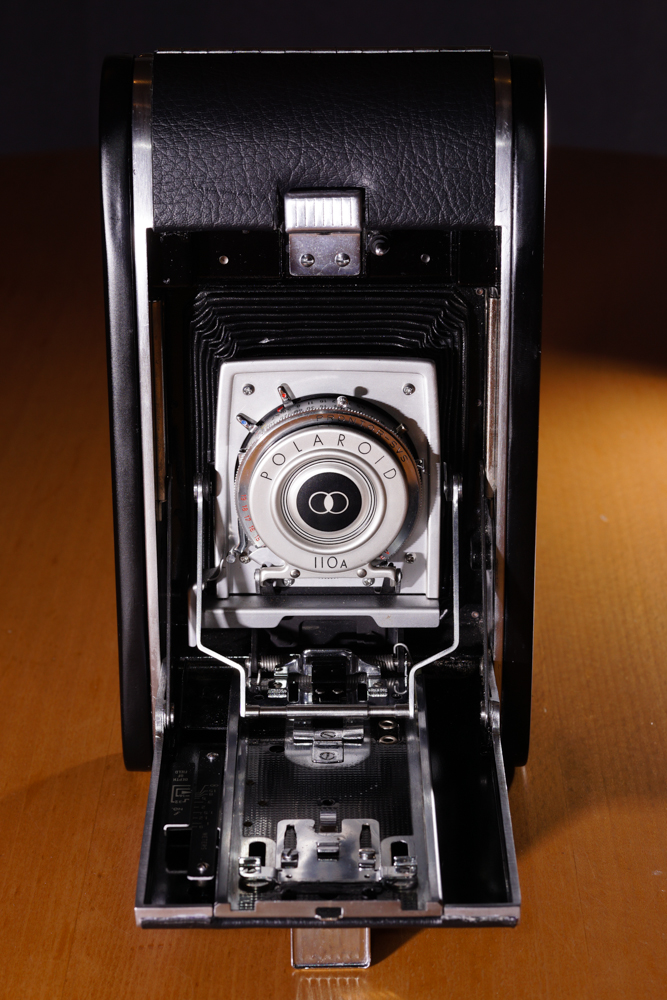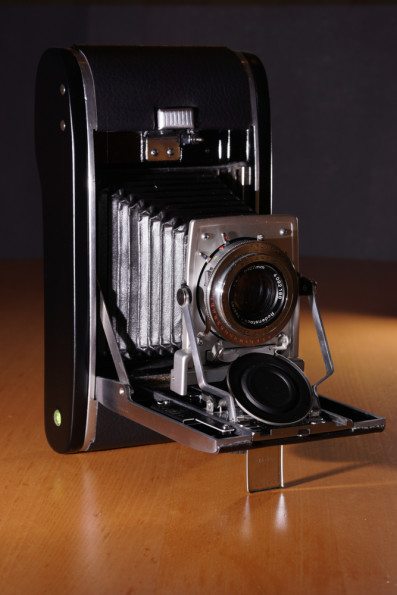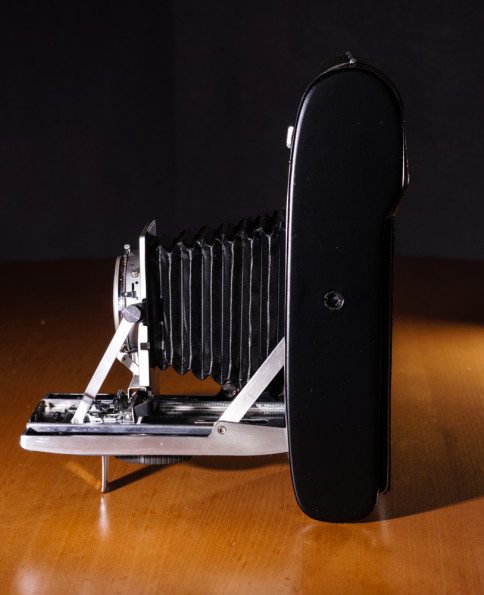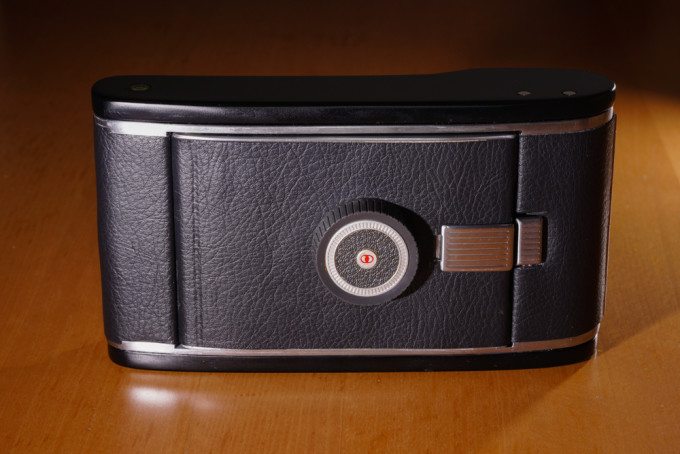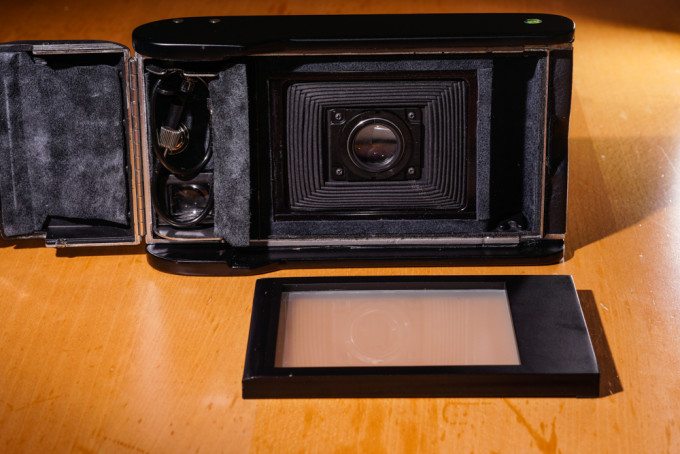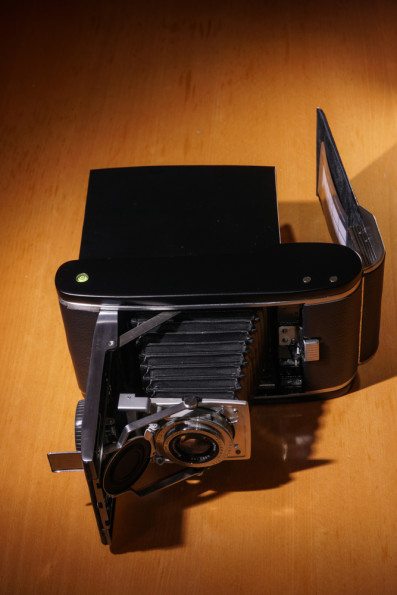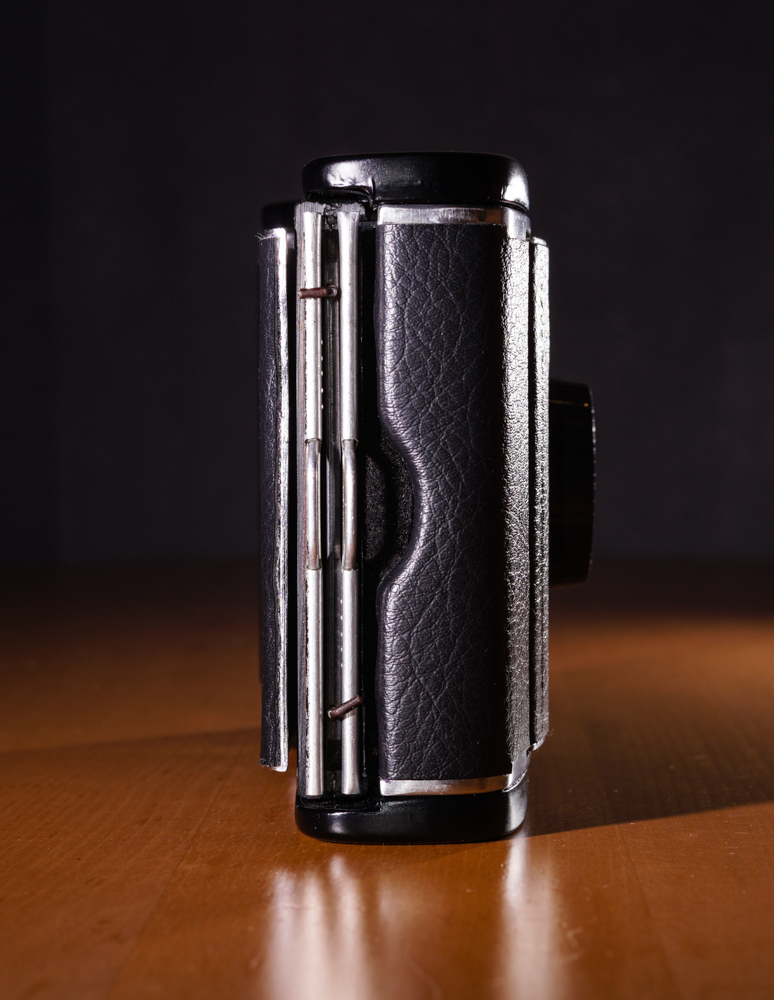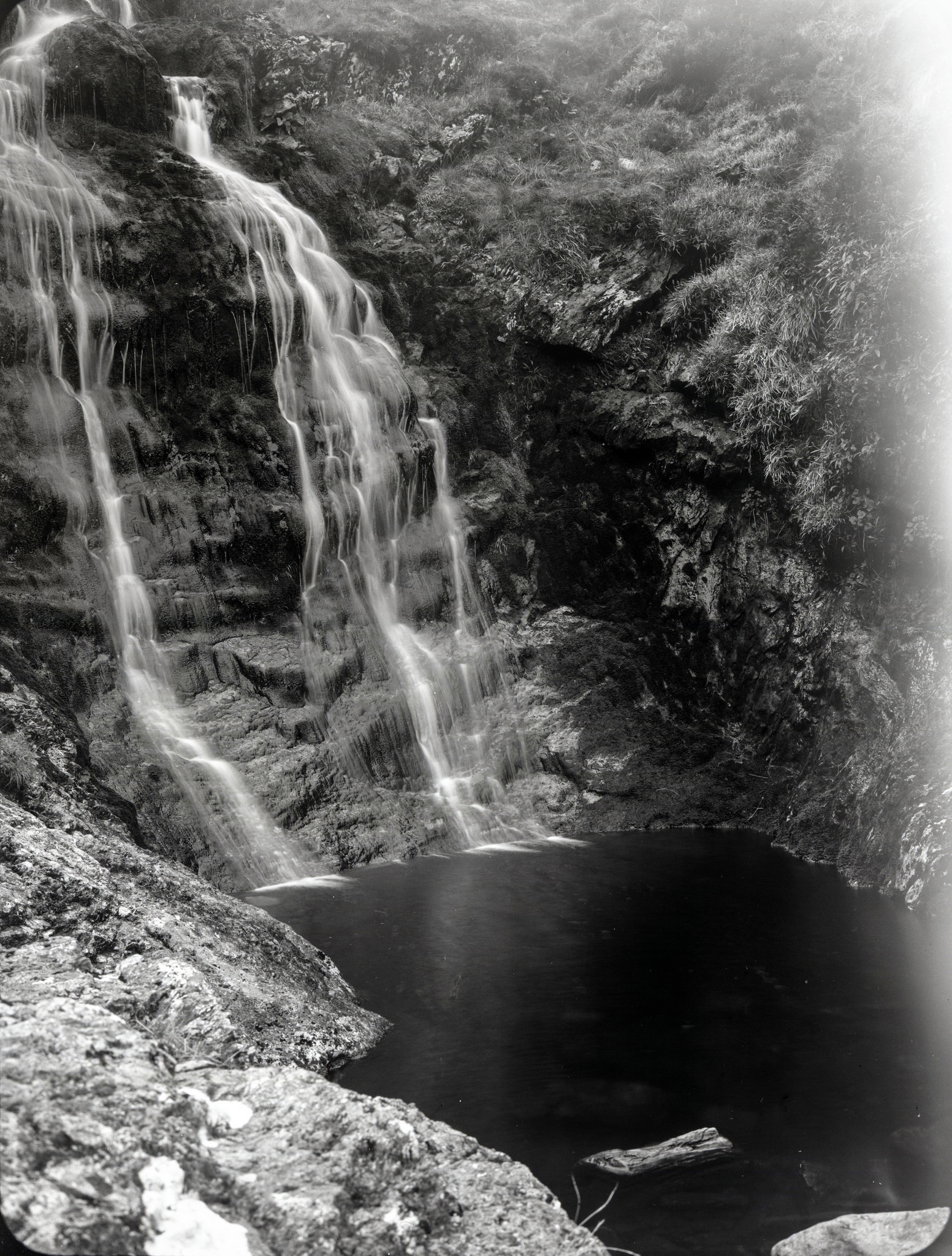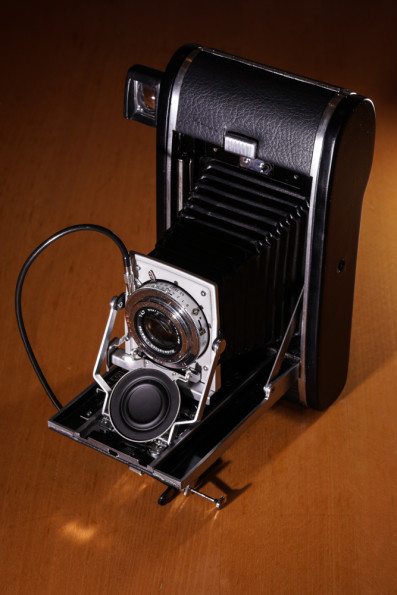All images by Steve Lloyd. Used with permission.
Photographer Steve Lloyd is a 37 year old shooter with a bit of a hobby on the side involving modifying older cameras. “I spend my days supporting a global IT server estate and, whenever I can, shoot a mix of analogue and digital photography.” says Steve. “I’m always on the lookout for the next project and am currently designing a bolt-on 4×5 conversion for Polaroid Land Cameras.”
Most of his work is done with mirrorless digital cameras, but Steve has a great appreciation for both medium format and large format cameras. That’s why he went about trying to convert an old Polaroid 110A camera to shoot 5×4 large format film.
Phoblographer: Talk to us about how you got into photography.
Steve: I first started shooting digital SLRs around 9 years ago when a friend I worked with showed me his Canon 350D. After using that for a while and learning the basics I was hooked! I initially spent my time shooting landscapes around the UK coast and stayed with Canon for the next 6 years using various models. During that time I also started shooting studio portraiture and eventually Weddings which I still do today. I’ve always been drawn to new technology and when Sony released the NEX series I started shooting an NEX-5 alongside my Canon kit and have since moved entirely over to mirrorless for my digital work.
Phoblographer: What made you get into large format imagery and tinkering with cameras.
Steve: When I was younger I used basic 35mm and disc film cameras as digital wasn’t around. The results were generally pretty poor as were a lot of ‘point and shoot’ photos at the time! Around 4 years ago I started taking an interest in film photography again as a result of the “Film & conventional” on the Talkphotography.co.uk forum and the people who post on there to share their wealth of knowledge in a really friendly way.
I’ve always liked well-engineered, tactile technology and the wide range of analogue cameras built over the last 100 years means that there is always another camera to try! I started with 35mm then worked up to medium format, shooting with a variety of cameras from Mamiya, Yashica, Kowa, Kiev, Fuji, Bronica, Agfa and Ensign. I still shoot medium format with a Yashica 635 TLR and am in the process of starting a crowdfunding campaign to produce a pair of interlinked filter holders so that a circular polarizer can be used on any TLR.
Shooting large format is a natural progression from medium format but the more prohibitive cost of good field cameras has always put me off. I love to see good medium format slide film results because they look like small stained glass windows so the idea of producing 4×5 slide film is what drew me in!
Phoblographer: So for this project, you went about converting an old Polaroid 110A camera into a 5×4 camera. What made you want to do this?
Steve: Before I started this conversion I wasn’t looking for a Polaroid 110a or any other model in particular. However, I came across one being sold locally that appeared to be in excellent condition and at a price I was happy to risk if the conversion wasn’t a success.
After looking into existing conversions I found that they generally fall into 2 main categories. The first option is to graft a Polaroid back onto the rear of the body by chopping one side off completely. Whilst this is a relatively simple conversion it requires major surgery and I felt that it always looks like a ‘bolt-on’. This also only allows Fuji FP100C peel apart film to be used which, whilst unique in its’ own way, isn’t large format.
The second option is to bond a complete Graflok back to the body using adhesive/filler. This conversion results in a very versatile large format camera that can use all existing film holders and there are some excellent conversions already available commercially. I was originally considering this route but the cost and difficulty of obtaining a good Graflok back meant I had to change my plan.
Phoblographer: Talk to us about the conversion process? What did you learn along the way and what was your plan to go about doing this?
Steve: After looking at some existing conversions I decided to use my own method which resulted in a much slimmer camera that retains the original rear door meaning that the camera can be kept almost completely stock if that’s the intention. I’ve actually built new top and bottom plates because I chose to remove the rangefinder/viewfinder but they could have been left in place.
On TalkPhotography I’m known for my projects so I always document them as I build. As well as sharing knowledge I also find this helps me progress more quickly by getting feedback/ideas from other photographers. Here are both the build thread and my Flickr album for the conversion process.
I’m lucky to have a very good custom laser cutting company near to where I live so I’ve worked closely with them to design a few parts for my 110a. The largest piece is the ground glass holder which is cut from two pieces of 6mm thick acrylic sheet and has a perfect 1mm rebate in each where the ground glass is held. There was no way I could cut the rebate perfectly by hand so by using the laser cutter I’m able to get a professional looking finished result without adding excessive weight. I’m also cutting a similar holder for a “23” Graphic roll film holder so I can shoot medium format film with the 110A.
If I was going to convert any other 110A’s there are a few areas I would approach differently. Specifically, the top and bottom plates were cut from MDF by hand and shaped/wrapped. These took a lot of time to complete due to the complexity of the curves so I would spend the time drawing them up digitally for the laser cutter so they could be cut automatically.
Phoblographer: So now that you’ve got a new 5×4 camera, how are you using it to further expand your creative vision?
Steve: Once I started my conversion I had a few main targets that I wanted to achieve;
Cost – I wanted to complete the conversion with minimal costs using available materials. I’ve been able to complete the camera using very few additional parts which has kept the overall cost low without compromising on quality.
Weight – One factor against large format photography is the overall weight. Along with the camera/lens there are also multiple film holders to carry along with loupes/tripod etc so the weight of the camera itself is critical. My finished camera only weighs 1.7Kg with the ground glass fitted which is considerably lighter than most commercially available 4×5 cameras.
Appearance – As well as delivering excellent results I also wanted the finished camera to look good so all parts had to be made well and fit cleanly. I also wanted the leather skin to be a perfect fit as well as offering protection. In the end I’ve got a unique camera that retains a classic black/chrome styling yet still stands out. I’m really happy with the fit and finish but am equally happy taking the camera out into the field with me.
Functionality – Whilst I haven’t changed the physical handling built by Polaroid 60 years ago, I wanted the camera to look like it could be picked up by any photographer and used without any problems. When the bellows are extended it certainly stands out but the basic fundamentals of photography are the same. Polaroid designed the camera with good ergonomics so it could be marketed as a ‘point and shoot’ instant camera and I’d like to think I retained that.
Whilst I was completing the conversion I spent the weekend in the Lake District (UK) with the 12 other members of the Film and Conventional section of TalkPhotography. While we were there we all shot with numerous cameras and formats and I was able to try out the handling of my 110A. I was shooting without the top and bottom plates so had some light leaks but for a first run testing the camera I was happy with the results.
The main reason for me to shoot large format is to slow down and think more about the results. When carrying 3 film holders resulting in only 6 available shots in total, every sheet has to be considered first! Even shooting for the weekend has shown me how rewarding large format photography can be which encourages me to shoot more. I’m really enjoying using my finished 110A and look forward to trying some portrait photography with it too.


